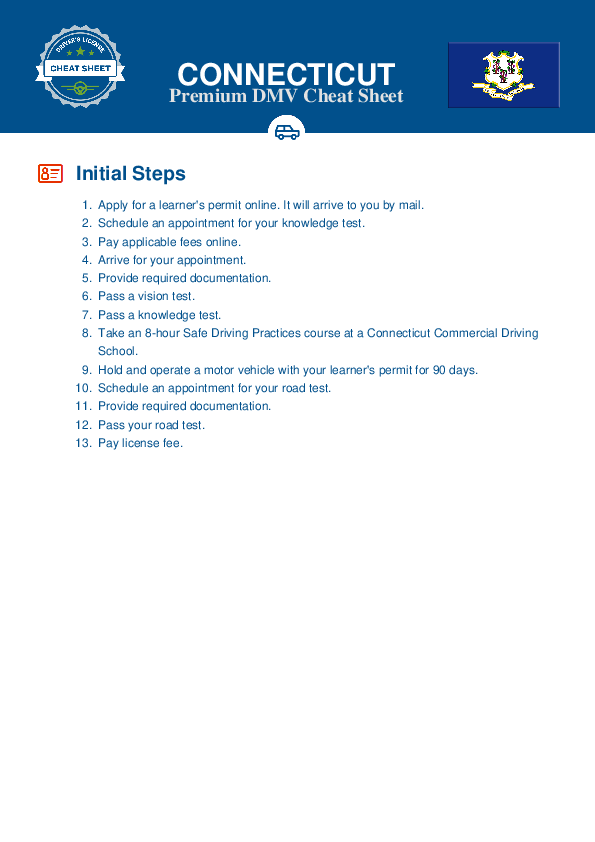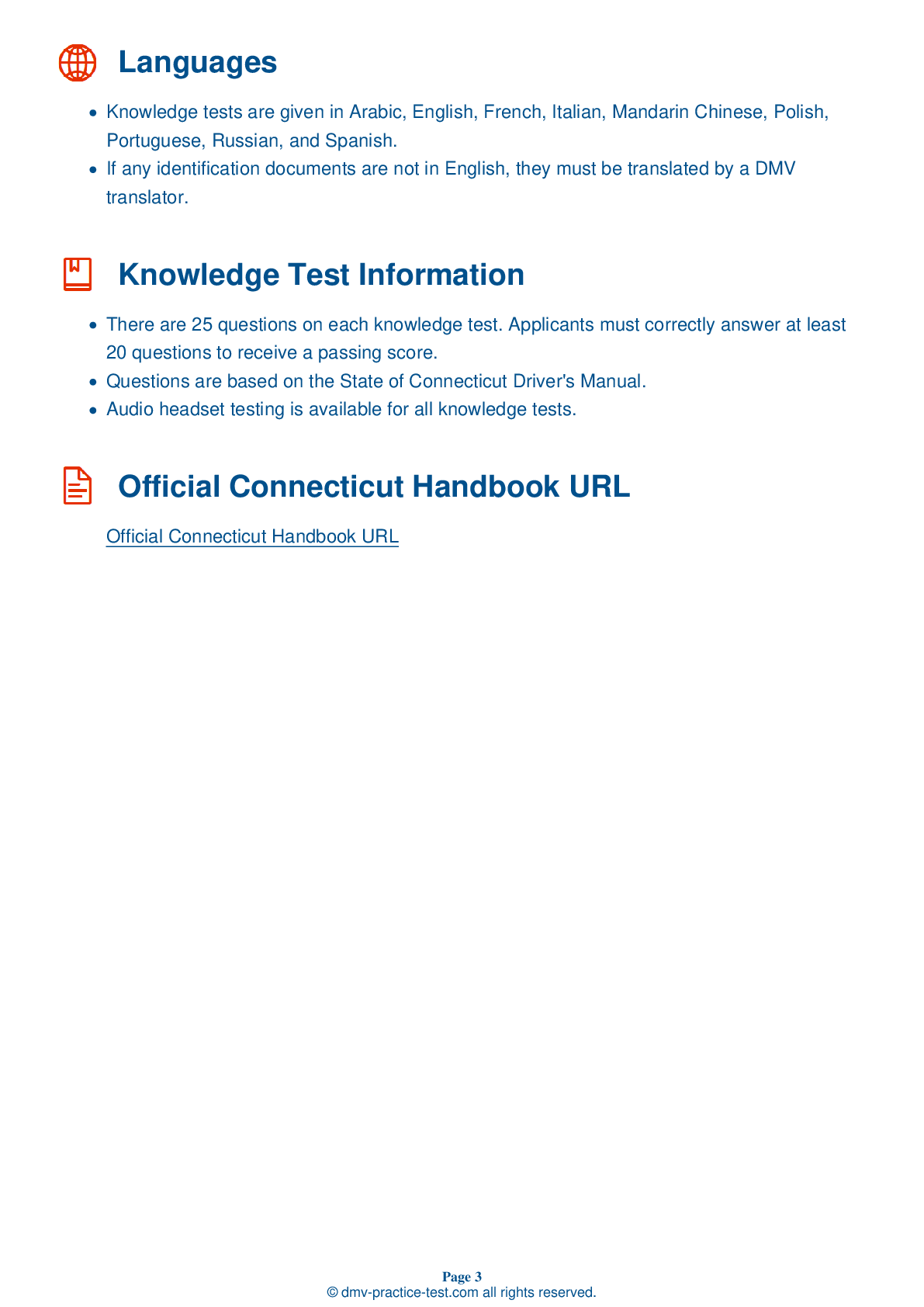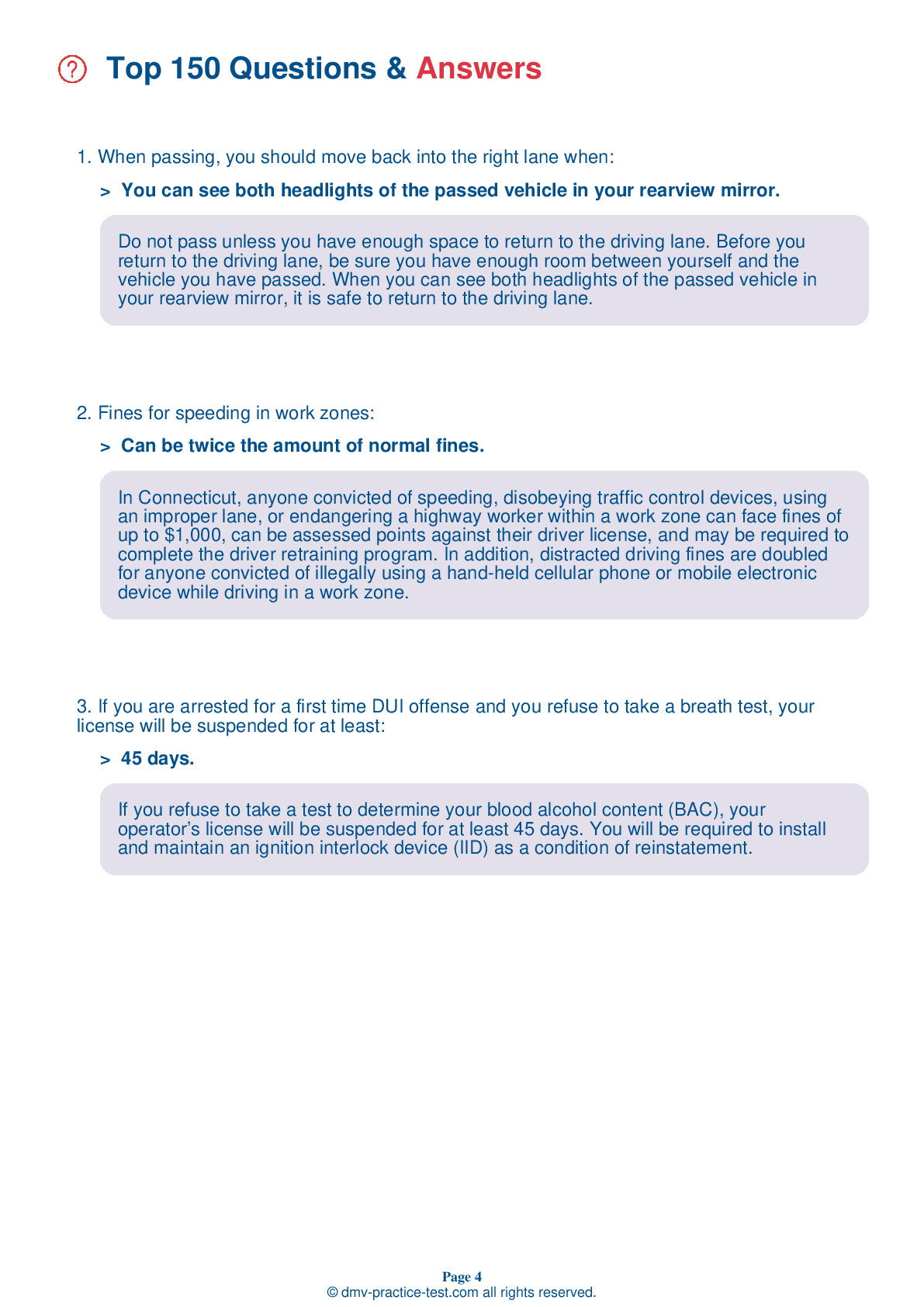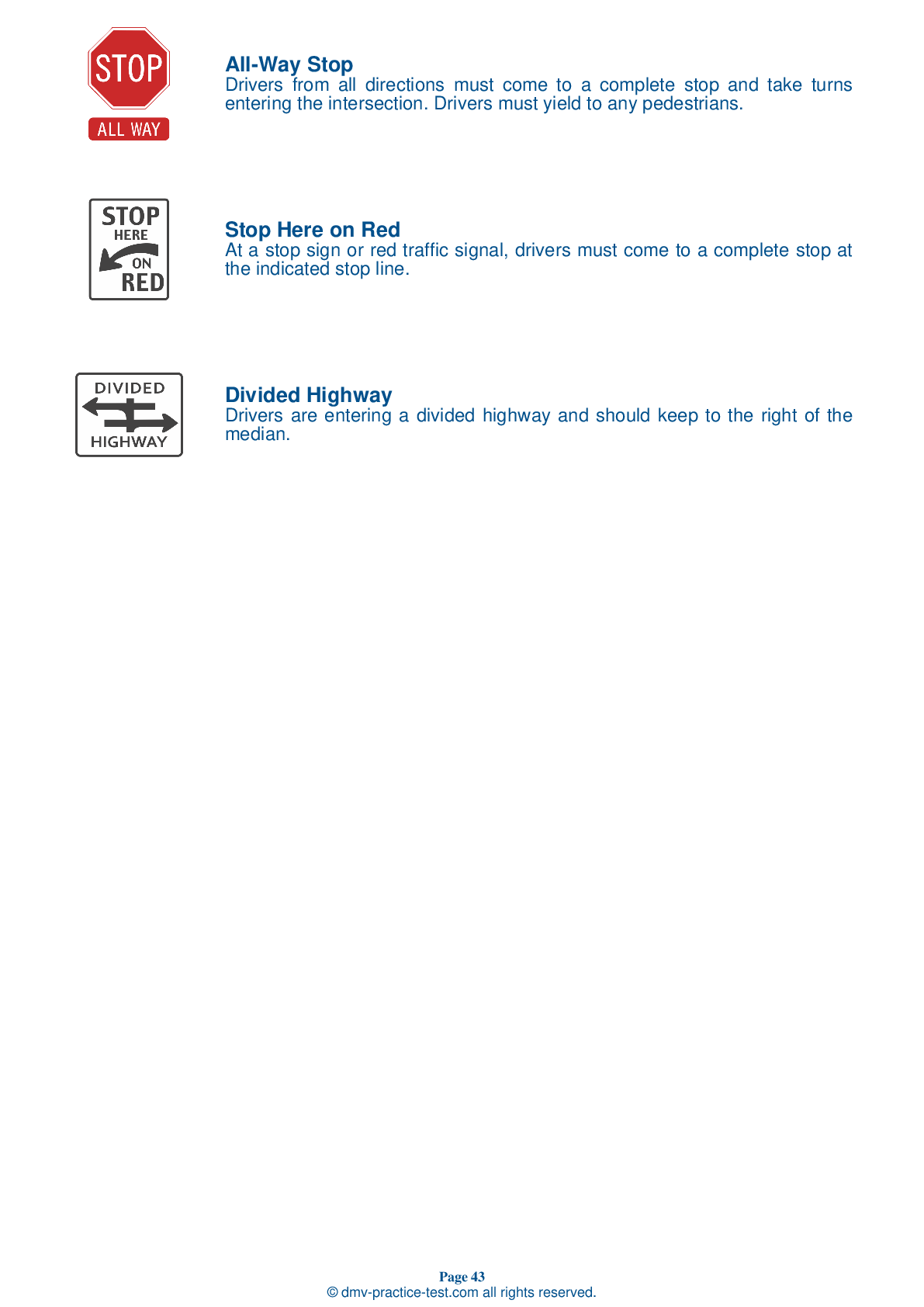FREE Connecticut DMV Practice Test #15 Page 2 of 3
This set of Connecticut DMV practise tests was just updated for January 2025. It includes questions based on the Connecticut Driver Handbook's most essential traffic signs and regulations for 2025. Use actual questions that are very similar (often identical!) to the DMV driving permit test and driver's licence exam to study for the DMV driving permit test and driver's licence exam.
Each practise test question has a hint and explanation to assist you in remembering the concepts. The written component of the official DMV test will include questions about road rules, traffic signs, and driving statutes, as well as information from the Driver Handbook.
To achieve the required passing grade, you must correctly answer 20 of the 25 questions. Take our DMV practise exam to help you prepare for your Connecticut instruction permit or driver's licence.
The DMV exam is available in several languages.
Using any form of testing help will result in an automatic fail, and the DMV may take further action against your driver's licence, so avoid it.
9 . When crossing a sidewalk to enter traffic from an alley or driveway, drivers should:
When leaving an alley, driveway, or parking lot to enter a roadway, you must stop before driving onto a sidewalk or sidewalk area. Pedestrians and existing traffic have the right-of-way.
10 . If you drive faster than other vehicles on a road with one lane moving in each direction and continually pass the other cars, you will:
You should avoid passing other vehicles on two-lane roads. Every time you pass a vehicle, your odds of being in a collision increase.
11 . Children on bicycles should be given extra space by motor vehicle operators because:
Children are often the least predictable pedestrians and the most difficult pedestrians to see. Take extra care to look out for children, especially near schools, bus stops, playgrounds, parks, and ice cream trucks. Be aware of children riding bikes on the sidewalk, as they may come onto the road unexpectedly.
12 . This sign tells a driver that:
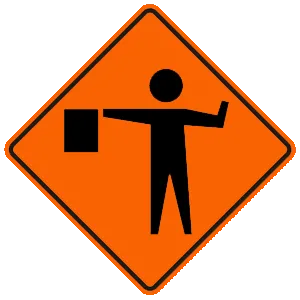
This sign warns that there is a flag person ahead. Always follow directions given by a flagger. Flaggers normally wear orange or yellow vests, yellow-green shirts, or bright jackets. They use paddles and red flags to direct traffic through the work zone and to let workers or construction vehicles cross the road.
13 . Which of these statements is true about driving and taking medications?
Remember that all medications, prescription or over-the-counter, are potentially dangerous and could impair your driving. Over-the-counter medicines that you take for colds and allergies can make you drowsy and affect your driving ability. It is your responsibility to know how your medication affects your ability to drive.
14 . This sign means that you:
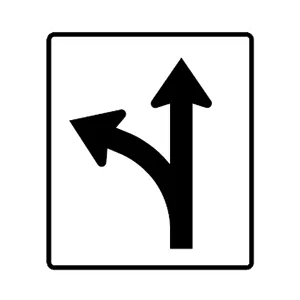
This sign lets you know that your lane is splitting into two separate directions. You may turn left or continue driving straight when in a lane controlled by this sign.
15 . This sign means:
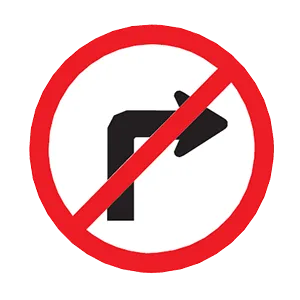
Signs with a red circle and diagonal line over a black symbol indicate the the action represented by the symbol is prohibited. In this case, the sign indicates that right turns are prohibited.
16 . What does this road sign mean?

Warning signs are usually yellow with black markings. This sign warns that merging traffic will be entering from the right, so drivers should prepare to allow the incoming traffic to safely merge.
See the exact questions that will be on the 2025 Connecticut DMV exam.
99.2% of people who use the cheat sheet pass the FIRST TIME
LT gives us an insight on how the cheat sheet provided her with all the study questions she needed before taking her test.
Joe initially studied with the handbook and failed his test, he eventually found us online, studied and pass his test the first time around.
